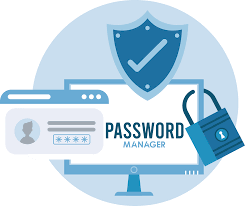In the ever-evolving landscape of technology and cyber threats, the creation of a cybersecurity strategy serves as a guiding beacon for organisations as they navigate the complexities of safeguarding their assets over the next three to five years. However, anyone familiar with the digital realm knows that both technological advancements and cyber threats can take unexpected turns. Therefore, it’s highly probable that this well-thought-out plan will require adjustments long before the three-year mark rolls around.

Picture a cybersecurity strategy not as a flawless blueprint but rather as an informed projection—a roadmap crafted with foresight about the steps your organization should take. As both your organization and the broader world undergo transformations, so too should your strategy adapt and evolve.
The primary goal behind formulating and executing such a strategy is to fortify your organisation’s assets against potential threats. This endeavour often signifies a cultural shift within the organisation, moving away from a reactive mindset that merely addresses issues after they arise. Instead, it embraces a proactive stance focused on prevention. This means prioritising measures that thwart cyber attacks before they can escalate into crises. Yet, even the most robust cybersecurity strategies recognise that incidents may still occur. The key lies in being adequately prepared to respond effectively when they do.

By successfully mitigating minor incidents, organisations can prevent them from spiralling into more significant problems. Such preparedness helps protect not only the company’s reputation but also safeguards the interests of employees, customers, shareholders, partners, and all other stakeholders involved. In this narrative of resilience and foresight, a well-crafted cybersecurity strategy emerges as an essential chapter in the ongoing story of organizational security—one that values anticipation over overreaction and resilience over vulnerability.
Crafting a cybersecurity strategy for your enterprise is a task that requires dedication and foresight. The stakes are high; the right approach can propel you ahead of your rivals, while a misstep could lead to significant setbacks or even the closure of your business. To navigate this complex landscape, it’s essential to follow a series of foundational steps that will help you establish a robust security framework.
The journey begins with a thorough assessment of your organization’s cyber threat environment. It’s crucial to take a step back and analyze the specific types of cyber threats that pose the most significant risk to your operations today. Are you most vulnerable to ransomware attacks, various forms of malware, phishing schemes, insider threats, or perhaps other emerging dangers? It’s also wise to keep an eye on your competitors; have they recently suffered any major security breaches? Understanding the nature of these incidents can offer valuable insights into the threats that might also target your own organization.

As you delve deeper into this exploration, it’s essential to familiarize yourself with anticipated trends in cyber threats that could impact your business in the future. For instance, many experts predict that ransomware will continue to escalate as criminal networks grow more sophisticated and ambitious in their tactics. Additionally, there is rising alarm about vulnerabilities in supply chains, particularly those linked to the procurement of compromised components—whether these are integrated into your own systems or distributed through products offered to customers. Gaining a comprehensive understanding of both current and forthcoming cybersecurity threats, along with an assessment of their potential severity, is vital for laying the groundwork for an effective cybersecurity strategy.

This narrative is part of a more extensive exploration into the realm of cybersecurity planning for businesses. This guide also delves into topics such as the top eight cybersecurity roles expected to be in demand by 2025 and beyond, as well as seven significant challenges enterprises may face in the cybersecurity landscape of 2025. Moreover, it offers a detailed step-by-step approach to developing your own cybersecurity strategy, ensuring that you’re well-equipped to face the ever-evolving digital battleground.
Step 2: Evaluating Your Cybersecurity Readiness
Having gathered insights into the landscape of threats your organization faces, the next vital step is to embark on a thorough evaluation of your cybersecurity readiness. This journey begins with selecting a reputable cybersecurity framework—one such option being the NIST Cybersecurity Framework, crafted by the National Institute of Standards and Technology.

As you delve into this framework, it serves as your guiding map, allowing you to navigate through various dimensions of your organization’s cybersecurity landscape. Picture this assessment as a comprehensive exploration, where you scrutinize your current position across an array of categories and subcategories. These encompass everything from governance policies to the technologies that safeguard your systems and the procedures in place for incident recovery. It is essential to include all forms of technology within this analysis: not just traditional IT systems but also operational technology, Internet of Things (IoT) devices, and cyber-physical systems.

Once you have completed this initial assessment, it’s time to cast your vision forward. Utilizing the same cybersecurity framework, consider where you aspire to be in three to five years regarding maturity in each category and subcategory. For instance, if you foresee distributed denial-of-service attacks looming as a significant threat, it becomes imperative to enhance your network security capabilities to withstand such challenges. Alternatively, if ransomware is likely to be your most pressing concern, prioritizing robust backup and recovery solutions will be critical.
Moreover, reflect on how the shift to remote work—accelerated by the COVID-19 pandemic—may have transformed your organization. Tools that were hastily implemented during this time must now be fortified for long-term use if these new work policies are here to stay. The maturity targets you establish during this exercise will become pivotal strategic objectives, guiding your efforts and investments in strengthening your cybersecurity posture moving forward. Through this process, you will not only gain clarity on your current state but also lay down a roadmap for future growth and resilience against cyber threats.

Step 3: Charting a Path to Enhance Your Cybersecurity Program
Having laid down a foundation and identified your future aspirations, the next chapter in your cybersecurity journey involves pinpointing the specific tools and capabilities that will propel you toward your goals. This phase is crucial as you strategize how to elevate your cybersecurity program in alignment with the strategic aims you’ve set forth. It’s essential to recognize that each enhancement you contemplate will require investment—be it financial resources, personnel time, or other assets. As you navigate this decision-making process, take time to explore various avenues for achieving these objectives, weighing the advantages and disadvantages of each approach. In your deliberations, you might even come to the conclusion that entrusting specific security responsibilities to external experts could be the most effective solution.

Step 4: Crafting Your Cybersecurity Blueprint
After successfully securing the green light from management, the next crucial task is to meticulously document your cybersecurity strategy. This is not merely a formality; it involves a comprehensive effort to articulate every aspect of your security posture. You’ll need to delve into writing or refining risk assessments, along with developing detailed cybersecurity plans, policies, guidelines, and procedures. Each element serves to clarify what is necessary or advisable to meet the strategic goals you’ve set. A pivotal part of this process is ensuring that everyone’s roles and responsibilities are clearly defined.
As you embark on this documentation journey, it’s vital to engage actively with those who will be tasked with implementing these strategies. Their insights and feedback are invaluable, as they can offer perspectives that might not have been considered. Take the time to communicate the rationale behind each change being made; illustrating the significance of these adjustments will foster a sense of ownership and support among team members.

Additionally, remember that your cybersecurity strategy isn’t solely about policies and protocols; it also encompasses the enhancement of your cybersecurity awareness and training initiatives. Every member of the organization plays a critical role in addressing security challenges and bolstering the overall cybersecurity framework. As your organization’s risk landscape evolves, so too must its culture surrounding cybersecurity—ensuring that everyone is equipped and ready to adapt to new threats and safeguard the enterprise’s digital assets.

In the ever-evolving landscape of cybersecurity, the journey of crafting and executing an effective security strategy is not merely a one-time endeavour; it is a continuous voyage fraught with obstacles and revelations. As organizations navigate this complex terrain, it becomes essential to periodically pause and reflect on their cybersecurity maturity. This process of monitoring and reassessing is akin to charting a course on an unpredictable sea. By regularly evaluating how well you are progressing—or perhaps stagnating—toward your security goals, you can catch sight of any areas that may be drifting off course.
Imagine yourself as the captain of a ship, navigating through waters filled with unseen dangers. If you notice that one aspect of your ship’s defenses is weakening, the sooner you can address it, the better chance you have of keeping your vessel afloat. This evaluation should encompass a variety of measures, including internal and external security audits, as well as rigorous tests and simulations designed to replicate various scenarios—like the chaos that could ensue during a significant ransomware attack. These drills serve not only as practice but as critical learning experiences that inform your strategy moving forward.

However, the path does not end here. In this age of rapid technological advancement and shifting threat landscapes, flexibility is key. Should a formidable new threat emerge on the horizon, it is crucial to be willing to revisit and revise your cybersecurity strategy. Embracing agility in your security approach will allow you to adapt to new challenges as they arise, whether it be through the implementation of cutting-edge technologies or the introduction of new assets that require protection.
As you embark on this ongoing expedition, remember that the world of cybersecurity is not static; it is a dynamic environment that demands vigilance and adaptability. With each wave of change, take the opportunity to refine your strategy and ensure that your organization remains resilient against the threats that lie ahead.

Secure browsing
When it comes to staying safe online, using a secure and private browser is crucial. Such a browser can help protect your personal information and keep you safe from cyber threats. One option that offers these features is the Maxthon Browser, which is available for free. It comes with built-in Adblock and anti-tracking software to enhance your browsing privacy.

Maxthon Browser is dedicated to providing a secure and private browsing experience for its users. With a strong focus on privacy and security, Maxthon employs strict measures to safeguard user data and online activities from potential threats. The browser utilizes advanced encryption protocols to ensure that user information remains protected during internet sessions.
Maxthon private browser for online privacy
In addition, Maxthon implements features such as ad blockers, anti-tracking tools, and incognito mode to enhance users’ privacy. By blocking unwanted ads and preventing tracking, the browser helps maintain a secure environment for online activities. Furthermore, incognito mode enables users to browse the web without leaving any trace of their history or activity on the device.
Maxthon’s commitment to prioritizing the privacy and security of its users is exemplified through regular updates and security enhancements. These updates are designed to address emerging vulnerabilities and ensure that the browser maintains its reputation as a safe and reliable option for those seeking a private browsing experience. Overall, Maxthon Browser offers a comprehensive set of tools and features aimed at delivering a secure and private browsing experience.
Maxthon Browser, a free web browser, offers users a secure and private browsing experience with its built-in Adblock and anti-tracking software. These features help to protect users from intrusive ads and prevent websites from tracking their online activities. The browser’s Adblock functionality blocks annoying pop-ups and banners, allowing for an uninterrupted browsing session. Additionally, the anti-tracking software safeguards user privacy by preventing websites from collecting personal data without consent.
By utilizing Maxthon Browser, users can browse the internet confidently, knowing that their online activities are shielded from prying eyes. The integrated security features alleviate concerns about potential privacy breaches and ensure a safer browsing environment. Furthermore, the browser’s user-friendly interface makes it easy for individuals to customize their privacy settings according to their preferences.
Maxthon Browser not only delivers a seamless browsing experience but also prioritizes the privacy and security of its users through its efficient ad-blocking and anti-tracking capabilities. With these protective measures in place, users can enjoy the internet while feeling reassured about their online privacy.
In addition, the desktop version of Maxthon Browser works seamlessly with their VPN, providing an extra layer of security. By using this browser, you can minimize the risk of encountering online threats and enjoy a safer internet experience. With its combination of security features, Maxthon Browser aims to provide users with peace of mind while they browse.
Maxthon Browser stands out as a reliable choice for users who prioritize privacy and security. With its robust encryption measures and extensive privacy settings, it offers a secure browsing experience that gives users peace of mind. The browser’s commitment to protecting user data and preventing unauthorized access sets it apart in the competitive market of web browsers.
By choosing Maxthon Browser, users can feel confident that their online activities are safeguarded from potential threats and invasions of privacy. In an age where digital security is more important than ever, opting for a browser like Maxthon is a proactive step towards ensuring a safer online experience. Embrace the reassurance of secure browsing with Maxthon Browser today!
The post Steps For Crafting Your Perfect Cybersecurity Plan appeared first on Maxthon | Privacy Private Browser.